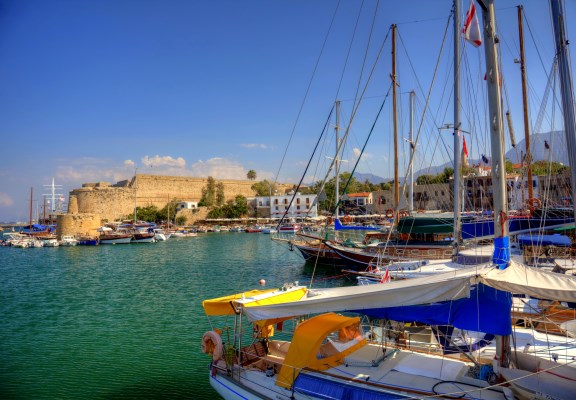Turtles in Northern Cyprus

Kantara Castle
26 October, 2009Village and Countryside
26 October, 2009There are two species of turtles that nest in the sand of the Cyprus beaches, and together with other islands of the Mediterranean and the coastline of Turkey, there are conservation sites continually monitored during the laying and hatching seasons.
The Loggerhead Turtle (Caretta caretta), and The Green Turtle (Chelonia mydas) both lay their eggs in nests that can be found all round the Cyprus coast, specifically in the soft sand of Alagadi beach to the East of Kyrenia, Golden beach in the Karpaz peninsula and The Akamas peninsula in the south.
In the Mediterranean the female or hen turtle will lay a clutch of eggs between late March and early June, that varies between 70 and 150. She will nest in warm sand and the incubation period will depend on the temperature, with the peak of the hatching period between July and August.
The hatchlings emerge at night and make their perilous way to the sea. The hours of darkness offer them the greatest protection from predators, but even so the infant mortality rate is extremely high. They are at risk from predators on land as well as in the sea as they provide a tasty morsel for large fish.
The loggerheads live on a diet of molluscs, squid, flying fish and jellyfish and appear to be totally immune to the toxins of the Portuguese Man o’ War, and their powerful jaws allow them to crush clam, crab and mussel shells.
If a loggerhead turtle reaches maturity it can expect a long life span well in excess of thirty years. Instinctively, the female will return to lay her eggs on or near the beach where she was hatched, no matter how many thousands of miles she may have migrated throughout the oceans of the world before she is ready to produce her own young.
Now protected from hunting the Loggerhead is no longer killed for its shell that was used to make combs, spectacle frames and fancy boxes. They are now classified as an endangered species and their biggest threat is from fishing trawlers.
The Green Turtle, is so called, not from the colour of its shell but from the colour of the fat beneath its skin. Unlike the Loggerhead, the Green turtle is an herbivorous creature, feeding in the shallows and lagoons upon the various sea grass species. It is known to migrate long distances between feeding grounds and the beaches they hatched from. The egg laying and hatching procedure is common to all sea turtles and they have a life span of approximately 80 years.
There are peoples throughout the world for whom the Green turtle and its eggs is a delicacy. They are killed for their flesh and their eggs are stolen from the nests, thus they too are on the endangered list.
Ultimately the greatest threat to these creatures that have roamed the world’s seas for thousands of years will be the destruction of their habitats. The soft sanded beaches where they lay their eggs are constantly being destroyed by man as yet another hotel or housing estate is built close-by. That is why the conservation areas such as there are on Cyprus are vital for the continuation of the species.
In 1991 the Society for the Protection of Turtles was founded in North Cyprus and it has a keen and enthusiastic following. Information on membership can be obtained by writing to SPOT, PO Box 42, Girne, Mersin 10, Turkey. The main base is at Alagadi beach and the summer season is monitored by students of Marine Biology from universities throughout the world. Turtle hatching nights are arranged during the season and information is available at the site office close to the beach with a sign that points the way.





